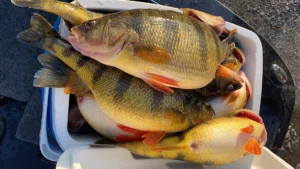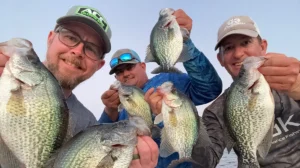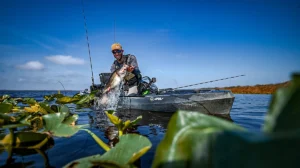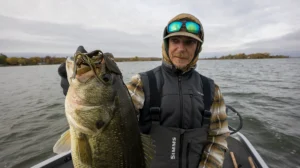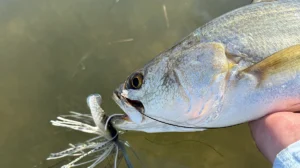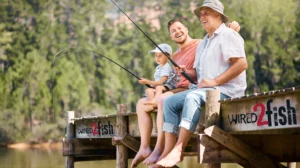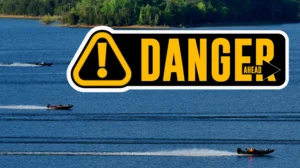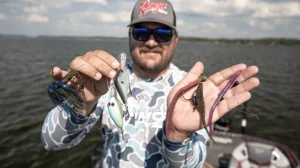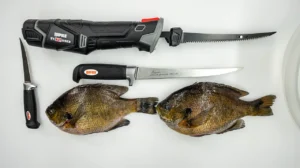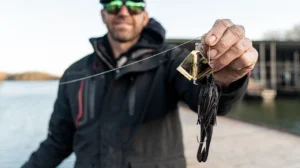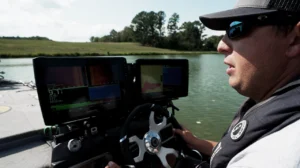Bryan Baker’s 118-pound, 10-ounce bighead carp was hooked while fishing in the same general area of Oklahoma’s Grand Lake of the Cherokees where he caught his 118-pound, 3-ounce record fish two years ago. Baker, who hails from Miami, Oklahoma, runs “Spoonbill Wreckers Guide Service” and chiefly targets oversize paddlefish. But when “spoonbills” are not cooperating and big carp are available, he targets those instead.
Because the lake is dark and carp commonly are deep, he uses forward-facing sonar to locate carp and casts to snag them. Because carp are an invasive species, snagging is encouraged by state fisheries folks for removal. Bighead carp show up well on sonar, especially Baker’s current pending world record 118-pound, 10-ounce fish that was nearly 5 feet long, with a massive 43-inch girth.
He snagged the fish on the afternoon of April 26, then had it weighed by state officials for approval for a new state record. That Oklahoma record process is in the works and the fish should easily be confirmed by the state.

Baker’s recent bighead carp is touted as the largest ever taken by hook and line. But it can’t be entered with the International Game Fish Association as an official world record because it was snagged, not caught in a conventional fishing hook-and-line method.
The IGFA bighead carp world record is 97 pounds, caught on a crankbait in the Missouri portion of the Mississippi River in 2024 via hook-and-line.
“There’s not that many carp, so I gotta search a good bit to find them,” Baker told Wired2Fish. “But they’re huge, so show up well.”
Baker says all his bighead carp are caught within two miles of the town of Miami, located in Northeast Oklahoma. He locates them with sonar usually 20 feet deep, but sometimes as shallow as just five feet. Big carp are given to state biologists to remove their otoliths in a fish’s ear canal near its brain. Otoliths then are analyzed for research.
“Biologists can take the otoliths and by looking at growth rings they can tell how old a carp is,” Baker said. “It’s sort of like reading the growth rings of a tree trunk. They can even learn what rivers a fish was in during its lifetime. It’s incredible what the Oklahoma fishery folks are doing. There are some very smart people doing this work.”


